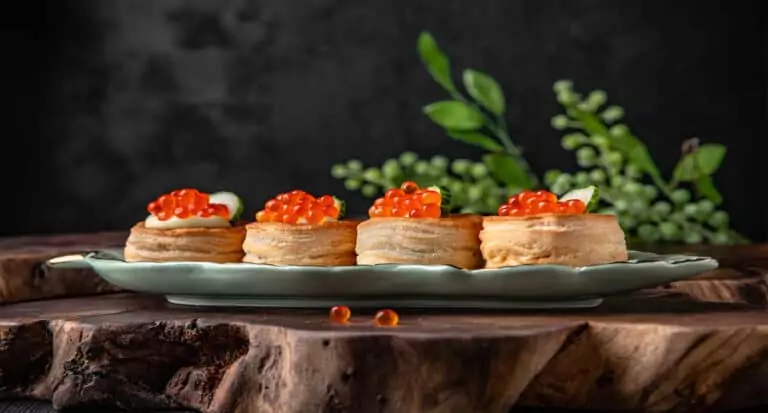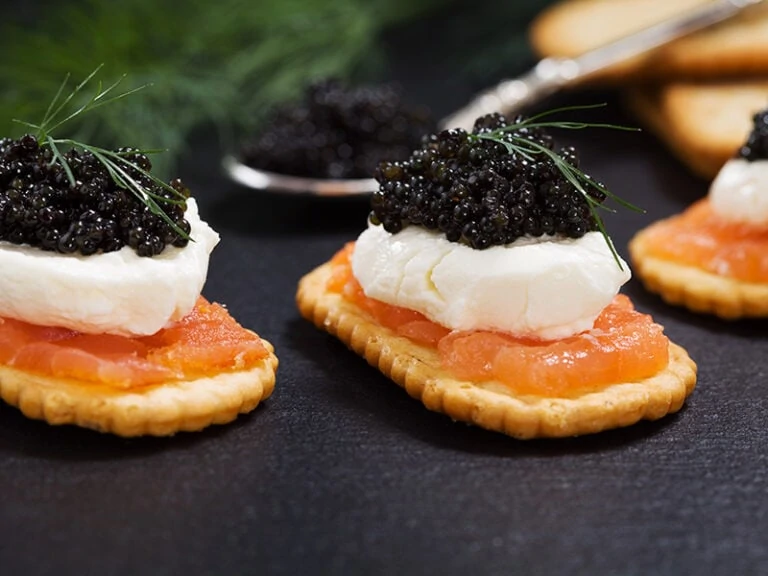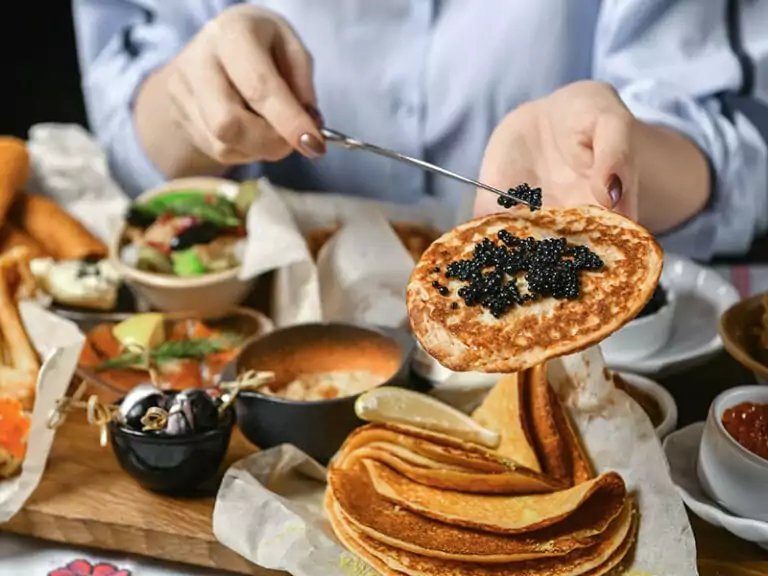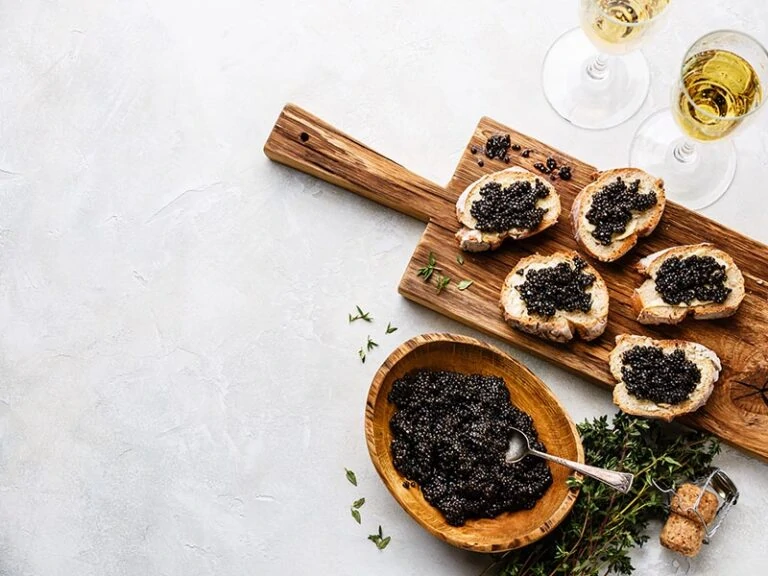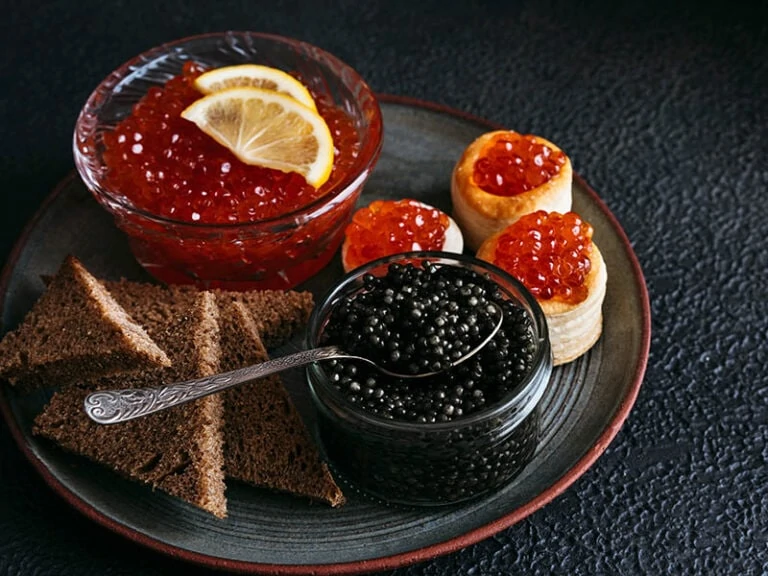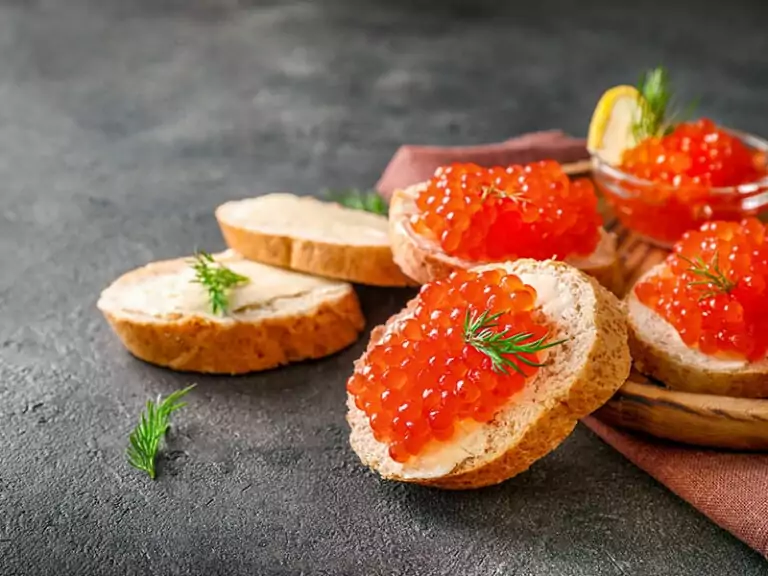Is caviar vegetarian or vegan? Many people will confidently offer an instant answer, yourself included. But think again! What I’m going to tell you is quite a different truth.
Since caviar comes in various types and so do vegetarian diets, I will show you that there are many ways to classify caviar. The answer is complicated but this post will help you make sense of it. Don’t go anywhere, stick around to find out how!
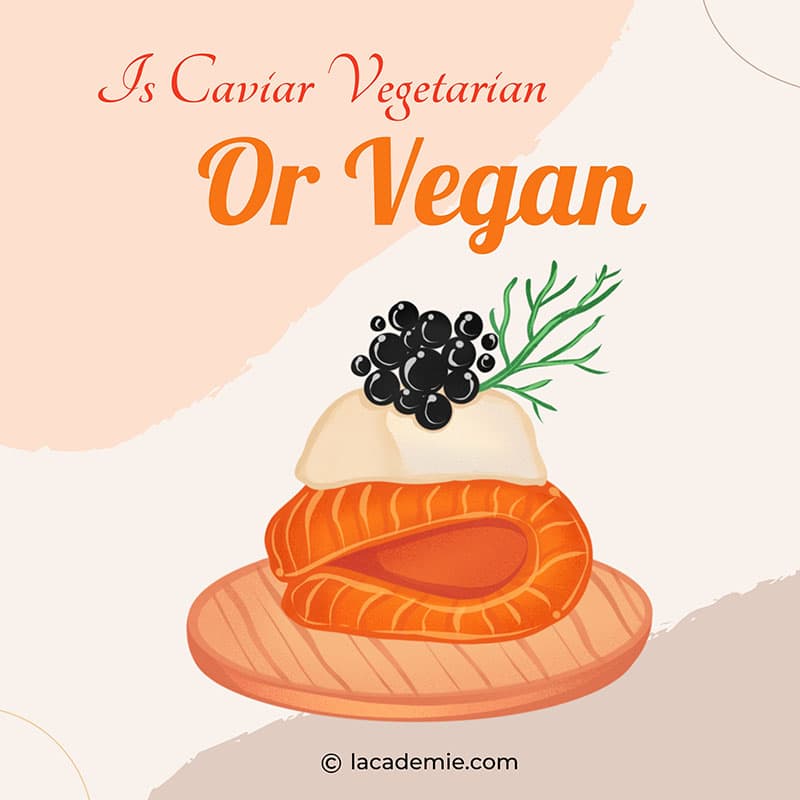
What You Need To Know About Caviar
Before determining whether caviar is suitable for a vegetarian diet, you should know the nature of caviar. In this section, I’m going to present an overview of what caviar is and where it comes from. You will soon see why this information matters.
Caviar Is Salted Fish Eggs
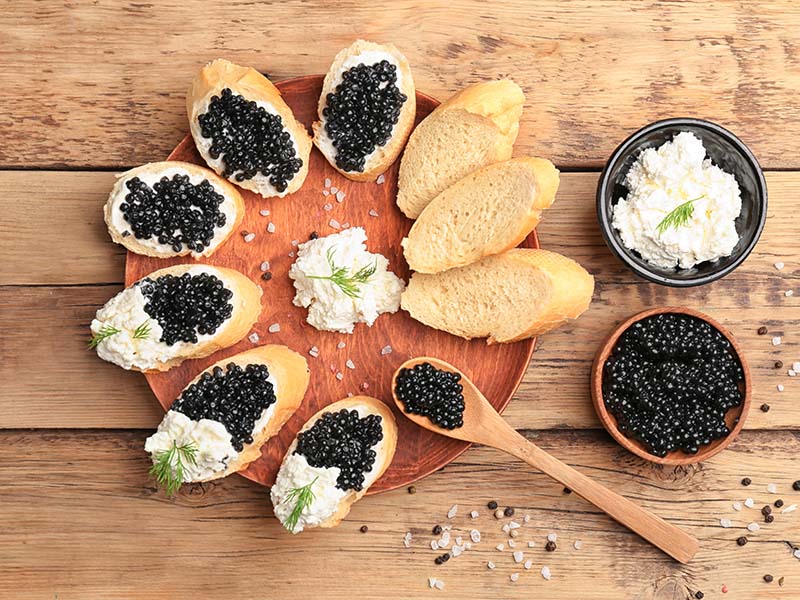
That’s right. Caviar is made from ripe and edible eggs (or roes) laid by the sturgeon. The eggs are cured with salt and usually sold in tins.
The best way to serve and enjoy caviar is to eat it raw. This may sound alarming but this food is very safe because the process of salting already eliminates most of the harmful bacteria. Pasteurized caviar is even more sterilized, but it loses the distinct caviar taste and texture.
Since the 19th century, caviar has become an expensive delicacy. Due to several reasons behind caviar’s high cost, its luxury status endures till the present day. However, the increasing number of sturgeon fisheries has raised the supply of caviar and made the food cheaper to buy.
The Golden Fish
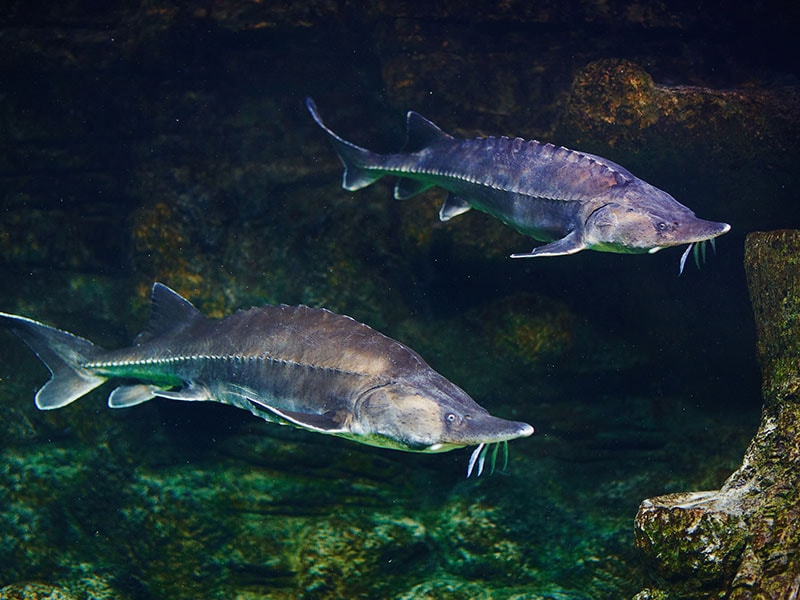
The sturgeon is special in many aspects. It is the only fish to lay eggs that are good enough to make caviar. It is also on the verge of extinction.
There are 27 species of sturgeon in Europe, Asia, and North America. Because of their eggs, sturgeons have been overfished all over the world. About 18 species are now critically endangered.
Wild caviar trade is illegal in many countries. Nowadays, people rely on sturgeon farms to produce caviar. Farm-raised sturgeons usually have to be killed to harvest their eggs, which complicates the question of categorizing caviar.
Not All Fish Roes Are Caviar
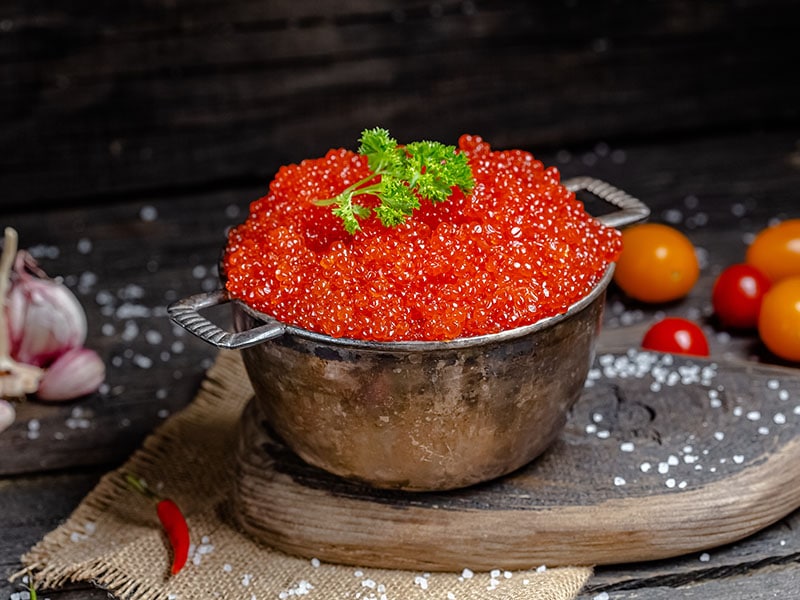
People invariably call every type of fish roe by the name “caviar”. There are many examples: salmon caviar, trout caviar, capelin caviar, lumpfish caviar, etc.
This trend can confuse first-time buyers. Real caviar only comes from sturgeons; no other types of fish roe deserves that name.
There are many differences between caviar and fish roe. Caviar is more expensive, caviar’s colors are mostly dark, and it’s always eaten raw. By comparison, fish roes are relatively cheaper; they can be colorful and good for cooking or serving raw.
Is Caviar Vegan Or Vegetarian?
Let’s get to the bottom of the most important question. But first, you need to distinguish between the two definitions.
Vegans don’t eat anything that animals produce, be it meat, milk, eggs, honey, or other byproducts. On the other hand, vegetarians refuse meat, poultry, fish, and seafood, but they can consume animal byproducts. You will learn more about the matter in the later part of this post.
Many people consider caviar not vegetarian because its production kills the fish. And since caviar is fish eggs, it is certainly not vegan. So here’s your answer: caviar is neither vegan or vegetarian.
Are you feeling let down? Don’t be so because, surprisingly, a few vegetarian diets accept caviar.
Not All Vegetarian Diets Exclude Caviar

If you practice veganism and lacto-veganism, caviar is absolutely out of the question. Classified as fish eggs, it is by definition an animal byproduct.
However, flexitarians have no problem with caviar. You can comfortably enjoy caviar as long as you don’t consume it too greedily. The advice still holds even if you don’t follow any diet because caviar is best enjoyed in small amounts no matter what.
If you practice pescetarianism or pollotarianism, you can choose whether to eat caviar or not. My advice is if you are affluent enough, go for it. Feeling the crisp caviar bead pop up in your mouth is a heavenly sensation.
Can Caviar Be Considered Eggs?
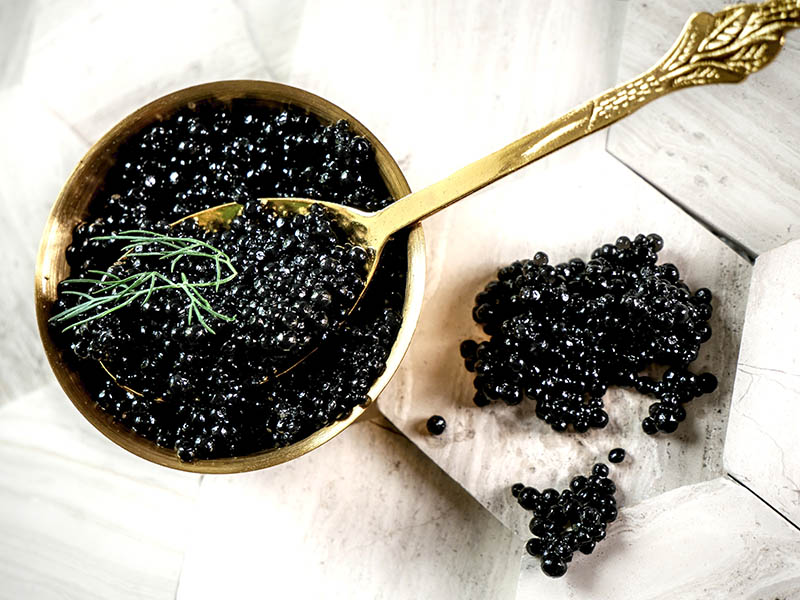
The question gets trickier with ovo-vegetarianism and lacto-ovo vegetarianism. Caviar is a subject of passionate debate. People aren’t sure whether sturgeon eggs are the same as chicken eggs.
Some people say that there are no differences between them. Eggs are eggs, where they come from doesn’t matter. If that is your opinion, don’t hesitate to buy some caviar.
Another school of thought argues that caviar can’t be considered in the same manner as normal eggs. People don’t kill chickens for their eggs but aquafarmers have to cut open sturgeons to harvest the roes. Therefore, caviar is too inhumane to be included in any form of vegetarianism.
If so, there is a counterargument. If the sturgeons aren’t killed, is caviar suitable for a diet with eggs? This is possible, but no-kill harvesting methods tend to reduce the quality of caviar as well as possibly contaminate it with artificial hormones.
If you are squeamish about the need to kill to produce caviar, it’s up to you to make the choice. The good news is that humane harvesting methods may become advanced enough in the future to make such a choice unnecessary. Or you can just switch to vegan caviar.
The Diverse World Of Vegetarianism
It is imprudent to think of vegetarianism as simply not eating meat. There are many types of vegetarian diets out there, each with its rules and purposes. If you are interested in this lifestyle, let’s find out more.
Which definition of being vegetarian you choose will decide whether caviar is relevant or not. You’re going to see how.
Veganism
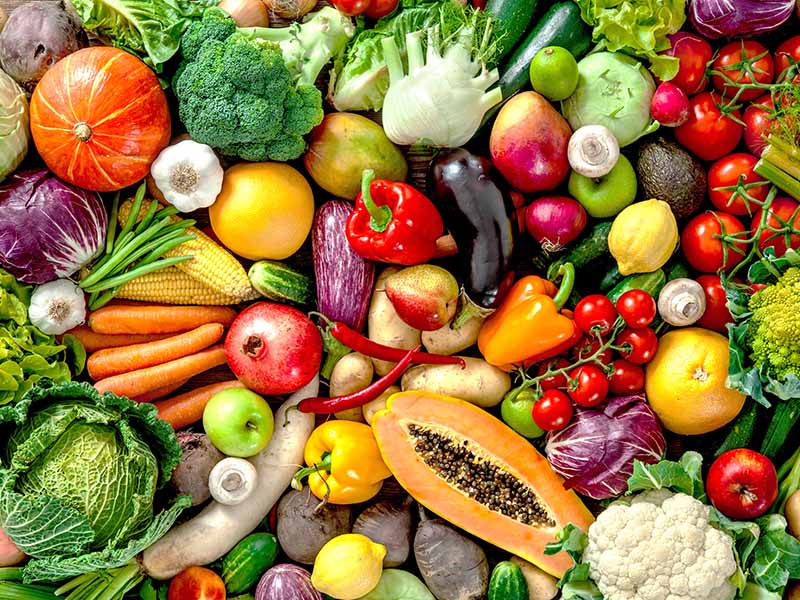
This is the most stringent type of vegetarian diet. To practice veganism, people only eat plant-based foods. It asks for the removal of anything related to animals from everyday meals.
The list of off-limits foods includes animal products such as meat, poultry, fish, and seafood. Banned animal byproducts are milk and dairy products, honey, eggs, fat, skin, and bones.
You will be surprised by the unlikely kinds of foods that have to be excluded under veganism. They are numerous kinds of baked goods (using butter that is made from milk), cream (derived from milk), and classic salads (mayonnaise is made from egg yolks).
Veganism doesn’t agree with people who have a sweet tooth. Because gelatin is made from animal tissues, it isn’t allowed by veganism either. So they will have to refrain from eating gelatin-containing foods like ice cream, fruit jellies, cakes, puddings, candies, marshmallows, and so on.
People practice veganism for animal welfare concerns, health, or religious reasons. Regardless of the purposes, they should try to compensate for the loss of animal-derived proteins and nutrients (1)
Ovo-Vegetarianism
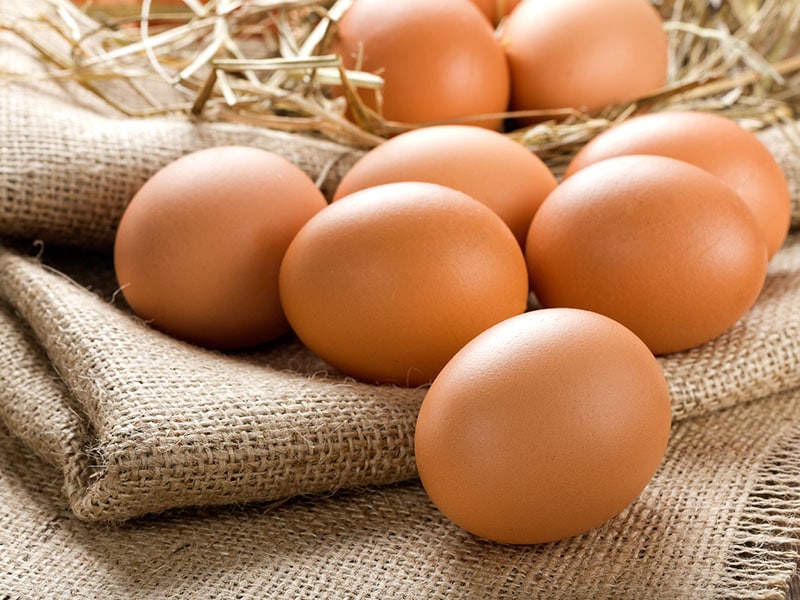
If someone follows an ovo-vegetarian diet, they abstain from all animal-based foods like vegans (so no jellies). The only difference is the allowance of eggs and products derived from eggs.
This opens more possibilities to choose from as there are many delicious dishes that feature eggs. Eggs are present in mayonnaise (salads are back, baby!), egg noodles, eggnog, eggrolls, and any kind of egg-based cakes like crepes and waffles.
With the addition of nutritious eggs, ovo-vegetarians can add more nutrients to their meals. People choose this diet over veganism for many reasons. They may want a healthier diet or think it is acceptable to keep egg-laying hens.
Lacto-Vegetarianism
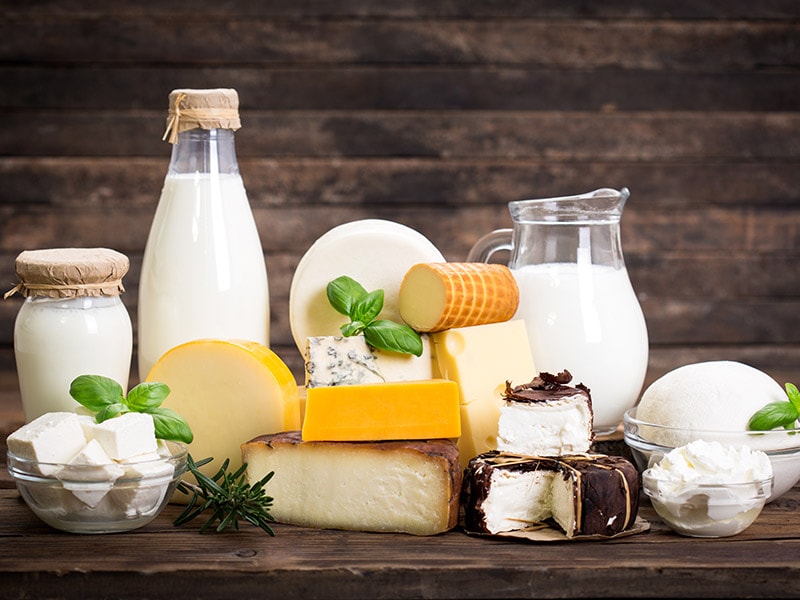
Lacto-vegetarians stay away from all kinds of food coming from animals, except for milk and dairy products.
Besides the vegan stuff, a lacto-vegetarian diet allows the following food: milk, cheese, yogurt, butter, and cream. Lesser-known dairy products like ghee (an ingredient typically used to make luscious desserts in India and the Middle East) and kefir (mainly from Russia) are also OK.
Dairy goods are an excellent source of fats and proteins so people adhering to this diet are relatively healthy. Lacto-vegetarianism is popular with people thinking it’s humane to milk cows. Hinduism followers also practice this diet.
Lacto-Ovo Vegetarianism
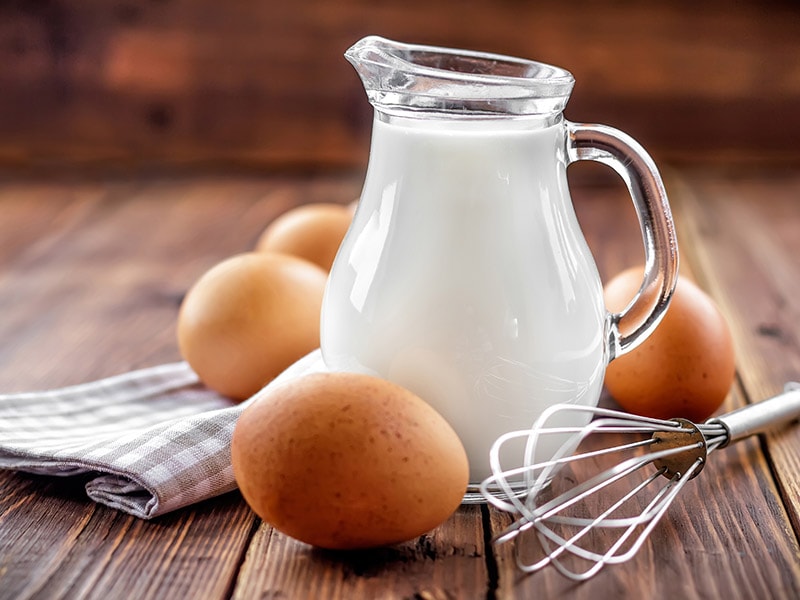
As suggested by the name, this diet shuns all animal-based foods but allows the consumption of egg and milk-derived products.
Suitable foods for a lacto-ovo vegetarian diet are grains, vegetables, fruits, nuts and seeds, vegetable oils, and, of course, eggs and dairy products. This is as perfect as a recipe for good health, which is one reason many people like this diet.
Another reason is to reduce animal cruelty. Because milking and harvesting eggs don’t harm the animals involved, the resulting products don’t cause moral qualms. But the animals must receive humane treatment first.
Pescetarianism
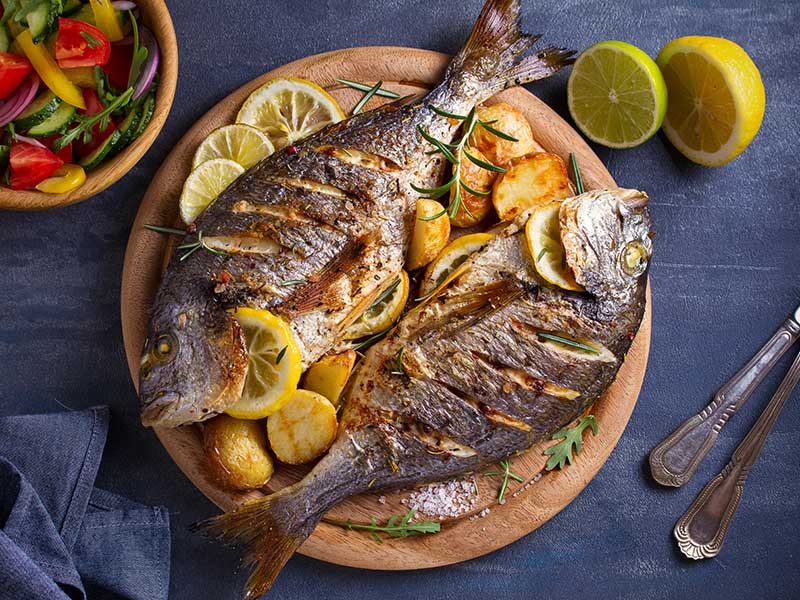
“Pesce” is the Italian word for “fish”, so can you guess what pescetarians eat? That’s right, they eat fish and seafood, along with grains, fruits, legumes, nuts, and seeds.
All types of meat, including poultry, are off their menu. While people can choose to eat animal byproducts or not, most do.
Like the previous vegetarian diets, people choose pescetarianism out of concerns for health, animals, or the environment. For instance, a meatless diet is generally beneficial to health since you can find everything your body needs in fish.
It also removes the need for large farms to keep livestock or poultry, which is a significant source of greenhouse gases. Besides, if you don’t eat meat, you can say no to animal slaughter. Of course, fish are animals but people don’t mind that fact much.
Pollotarianism
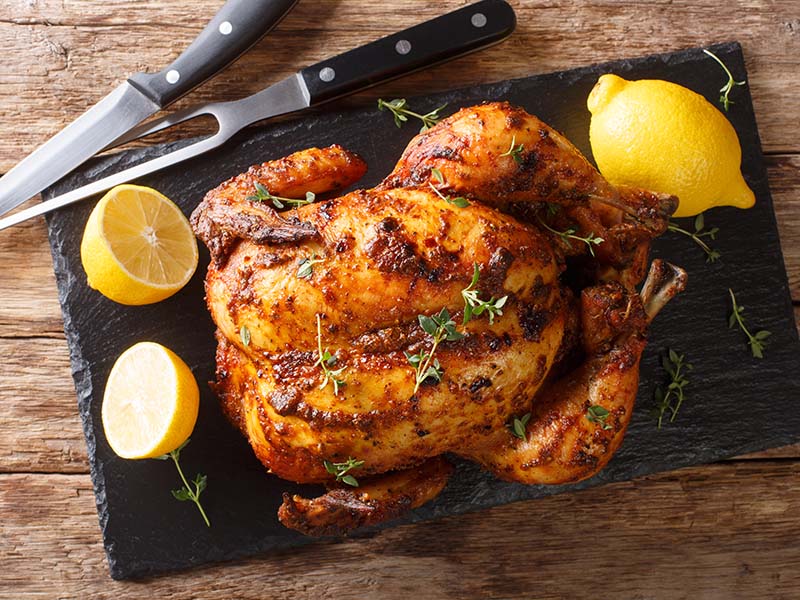
If you love the classic 2000 “Chicken Run”, this diet may upset you. Pollotarians can eat poultry but exclude other types of meat, fish, and seafood from their diet. Also, they usually consume milk, eggs, honey, and other animal byproducts.
Poultry is believed to be healthier than red meat. So you can gain some health benefits from a pollotarian diet. Some people practice this diet as the first step toward eliminating all forms of meat from their meals.
There is a hybrid version of this diet with pescetarianism. It is called pollo-pescetarianism which only excludes red meat.
Flexitarianism
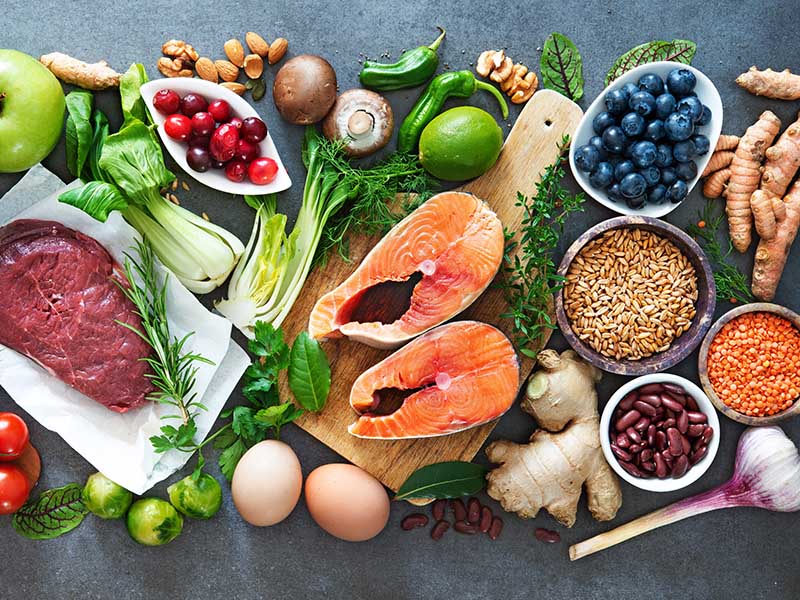
This vegetarian diet is worthy of a fierce debate. Because, for one thing, it isn’t even a vegetarian diet.
Flexitarianism deals with how you should eat your food, not what you can eat. It allows people to consume all kinds of foodstuffs in moderation. So as long as you don’t eat too much of anything, you can eat everything from meat to fish and all byproducts.
However, a flexitarian diet also requires you to prioritize certain foods. They are mainly fresh, unprocessed plant-based stuff like whole grains, fruits, veggies, nuts, seeds, etc. Organic products are more valued than those bred in industrial meat production.
In essence, flexitarianism is about appreciating fresh foods and reducing the consumption of meat. It helps people pursue a healthier lifestyle while still enjoying animal products.
You’re going to view the wrap-up of the different vegetarian diets.
Wait, Is There Such A Thing As Vegan Caviar?
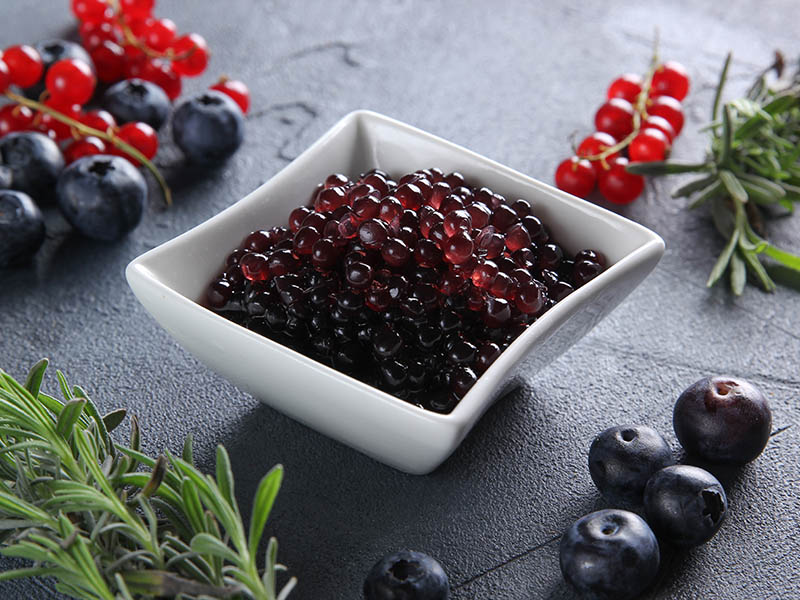
That’s right. It is a kind of vegan food made to imitate, to some extent, the look and the taste of real caviar. Mass-produced products can look exactly like the real thing, while homemade vegan caviar tends to have a different appearance.
With vegan caviar, you can still try out the flavorsome caviar side dishes. This way, you can still enjoy the culinary experience usually associated with eating the real caviar.
The main ingredients for vegan caviar vary between different varieties. They can be seaweed, kelp, algae, agar agar, or gelatin. Remember that some types of gelatin are animal-based products and unsuitable for certain diets.
Surprising Benefits Of Vegan Caviar
Supposing that you don’t follow a strict diet such as veganism, there is no reason why you can’t eat real caviar. But I recommend you to give vegan caviar a try because of the following reasons.
Vegan Caviar Is Delicious
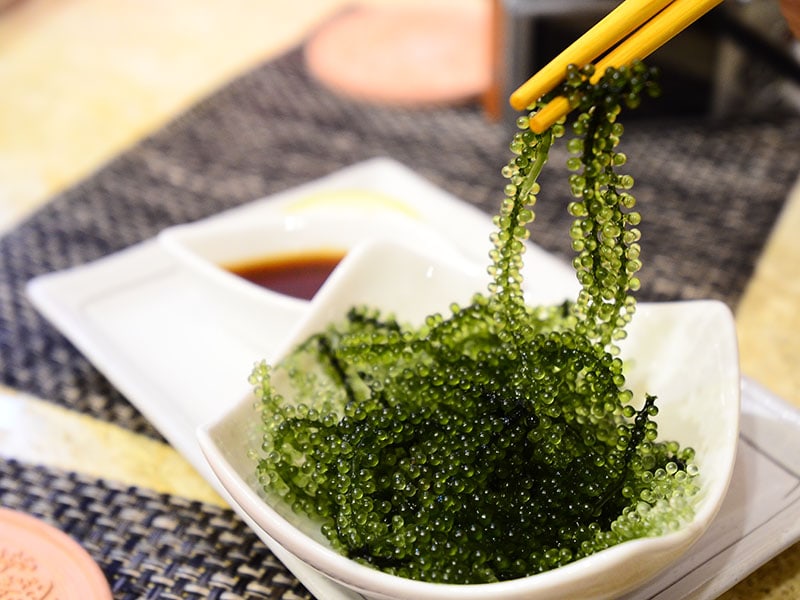
“Umami” is usually how people describe the sweet, buttery, succulent flavor of sturgeon caviar. But do you know that it was discovered by a Japanese scientist while he was eating a bowl of kelp broth (2)?
Kelps, seaweeds, or all kinds of edible algae in general have a uniquely pleasant flavor. They are bestowed a rich and delicious tangy flavor. If anything can be as close to caviar in taste, seaweeds are certainly the one.
Vega Caviar Is Nutritious And Healthy
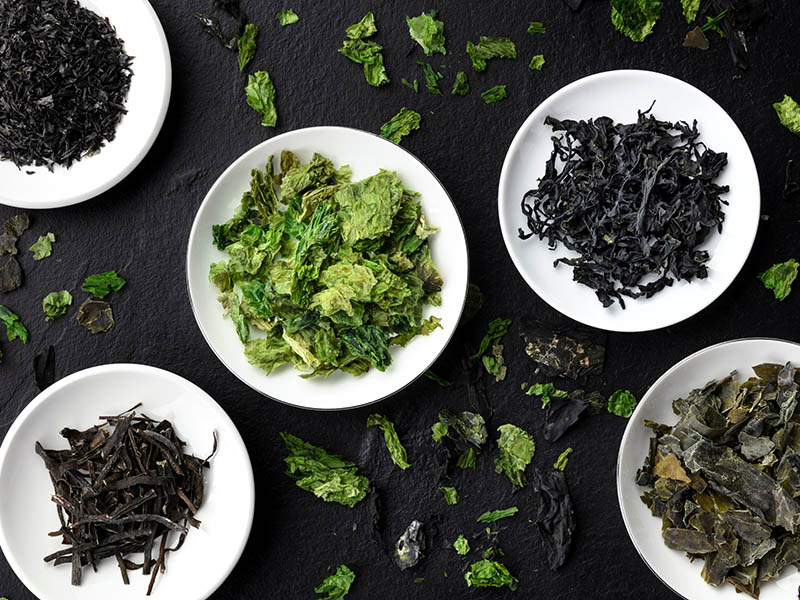
Caviar is a treasure trove of vitamins, minerals, proteins, and beneficial omega-3 fat. But guess what, so are seaweeds. Whatever nutrient that caviar offers, you can rest assured that the vegan version has it too.
On top of that, vegan caviar doesn’t have the drawbacks of caviar. While it has an excellent taste, caviar is full of calories, cholesterol, and sodium. By contrast, seaweeds are cholesterol-free, gluten-free, and low on salt and calories.
Vegan Caviar Is Convenient
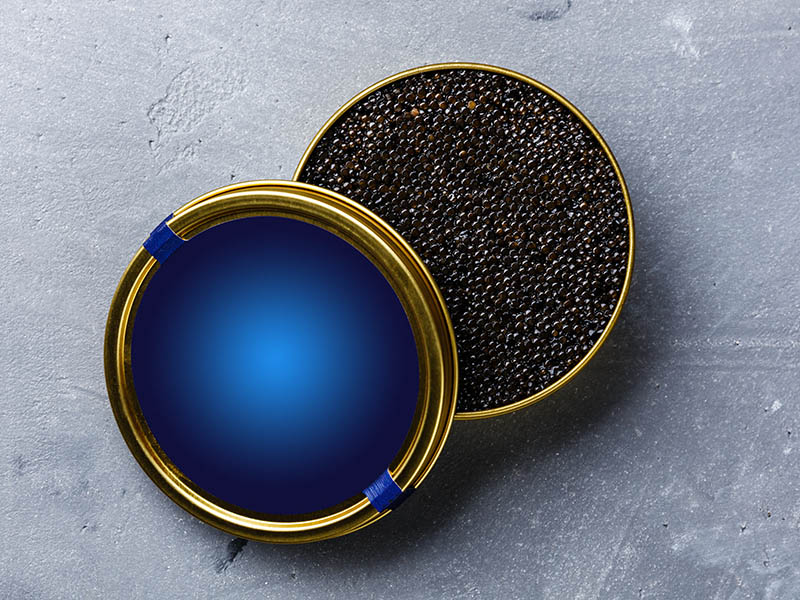
Seaweed-based caviar is superior to the original variety in terms of shelf life. A sealed package of vegan caviar can be shelf stable for 3 years, which is about 30 times longer than you can keep caviar. After being opened, vegan caviar can last for 3 months, in comparison to sturgeon caviar’s 3 days.
What’s more, vegan caviar doesn’t need refrigeration. You just need to keep it in a cool place out of direct sunlight; your cupboard will do. On the contrary, real caviar has to be stored in the refrigerator all the time.
Note: Homemade vegan caviar doesn’t last as long as the manufactured version. But it still has a longer shelf life than opened caviar.
See how long-lasting kelp caviar is produced on a massive scale.
Vegan Caviar Doesn’t Involve Killing
People sometimes overlook fish when thinking about animal cruelty. It’s time to include the sturgeon in the equation. Caviar production always kills or at least inflicts sufferings on sturgeons. A switch to vegan caviar helps you to end that misery
Vegan Caviar Is Sustainable And Eco-Friendly
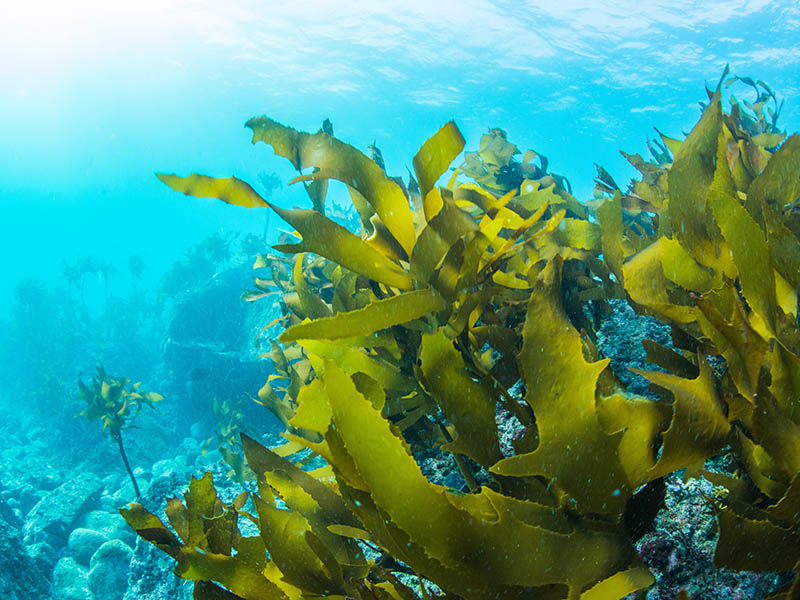
Sturgeon fisheries can be seen as a success story. They increase the supply of caviar and reduce the need for fishing wild sturgeons. But they aren’t without risks.
Above everything else, aquaculture discharges a large amount of chemically infused wastewater. It can destroy the ecological system if it isn’t monitored closely.
Meanwhile, seaweed cultivation doesn’t pose such threats. Under ideal conditions, seaweed farming can even help preserve coral reefs, capture carbon, and improve the health of the oceans.
Exciting Vegan Caviar Recipes
Just like you can prepare palatable dishes with caviar at the center, there are many dishes you can cook with vegan caviar as well. They’re easy to make at home. Just follow these easy recipes, and you can put a dish of delicious “caviar” on the table.
Vegan Caviar With Agar Agar Powder
This recipe is used to make “ black pearls” which means vegan beads that look exactly like caviar grains. It is a little meticulous and time-consuming, but the result is very worthwhile. Let’s see if your friends can tell the difference between your dish and the real thing!
Preparation
- 15 grams of dried seaweeds of any kind (kombu, nori, dulse, sea lettuce, etc.)
- 1 cup of water
- 2 cups of olive oil
- 10 grams of sliced ginger
- 1 tablespoon of soy sauce or coconut aminos
- 1 tablespoon of agar agar powder
- ½ tablespoon of activated charcoal
- Additional garnishes (shiitake mushroom, caper, etc.)
- A dropper or a big syringe without the needle
Instructions:
Step 1: Cool The Oil
Pour your olive oil into a big bowl and put it in the refrigerator for 30 to 45 minutes. Meanwhile, carry out the following steps.
Step 2: Prepare The Vegan Caviar Liquid
Pour 1 cup of water into a saucepan. Put it in the oven and keep it heated until the water boils. Turn down the heat and add dried seaweeds, ginger, and garnishes to the water. Let the mixture simmer for 5 to 10 minutes. Then strain the mixture, keep the water but discard the solids.
Step 3: Improve The Vegan Caviar Liquid
Add soy sauce (or coconut aminos), agar agar powder, and activated charcoal to the saucepan. Keep it at a low boil and stir gently for 2 to 3 minutes. When the mixture thickens, take the saucepan off the oven.
Step 4: Make Black Pearls
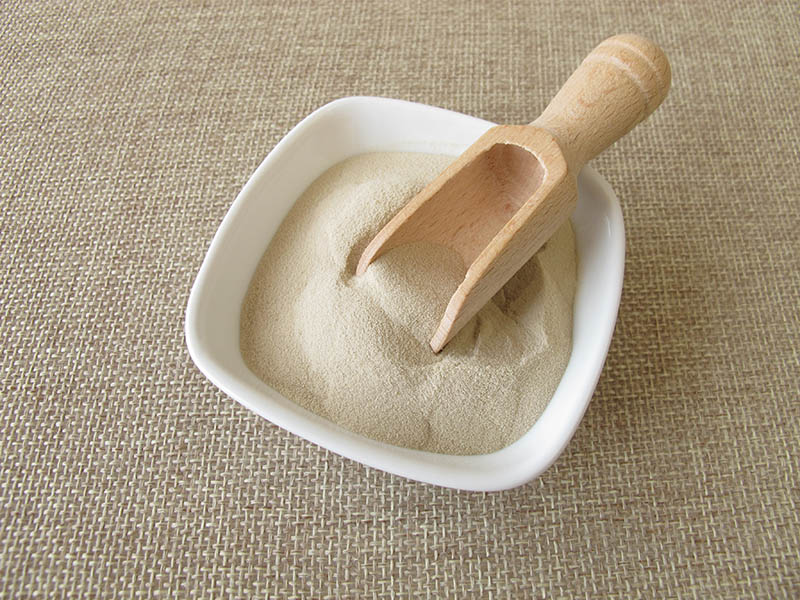
When the olive oil is ready, use the dropper to drip the caviar liquid into the oil. Each droplet will solidify into a black bead when it comes into contact with the oil.
Continue to do so until you have used up the liquid. Your caviar is ready! Store it in the refrigerator until use. The olive oil can be reused for cooking.
Vegan Caviar With Chia Seeds
This recipe doesn’t produce “caviar” as authentic-looking as the first recipe, but it is incredibly easy to follow.
Preparation
- 1 cup of water
- 10 grams of sliced ginger
- 10 grams of dried seaweeds
- 1 tablespoon of soy sauce or coconut aminos
- 4 tablespoons of chia seeds
Instructions
Step 1: Prepare The Mixture
Mix water well with soy sauce (or coconut aminos) and ginger in a bowl.
Step 2: Add Seaweeds To The Mixture
Crumple up the dried seaweeds into as small pieces as possible with your hand and add them to the mixture. To further break the seaweed clumps, you can mince the mixture with a blender.
Step 3: Create Your Caviar With Chia Seeds
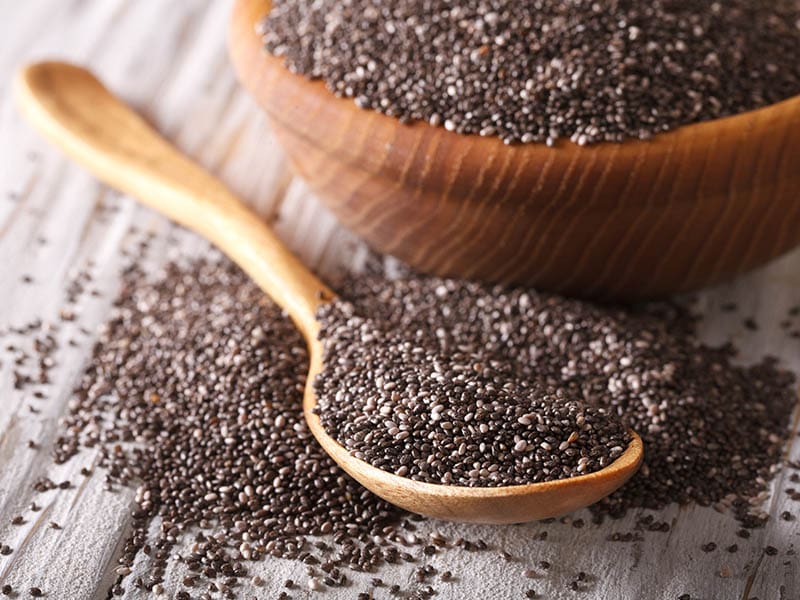
Combine the mixture with chia seeds and stir well. Leave the bowl undisturbed for 1 to 2 hours. The chia seeds now have grown bigger and plumper. Your caviar is complete! Don’t forget to store it in the refrigerator.
Find out how to turn seaweeds and chia seeds into “black caviar” to go with bread.
Q&A
Still have questions about vegetarianism and vegan caviar? Let’s check out the answers below.
Mystery Solved: Caviar Isn’t Vegan Or Vegetarian
I hope you find this post a satisfactory answer. Being vegetarian doesn’t mean you have to shut the door in the face of caviar.
If your diet allows caviar, you may want to include it in your next party. If it doesn’t, there are always vegan alternatives to choose from.
If this post is useful to you, please share it with your family and friends. It would be great to help them know more about caviar and its unexpected vegetarian quality. Even better, you leave a comment to tell what you think! Thank you very much!
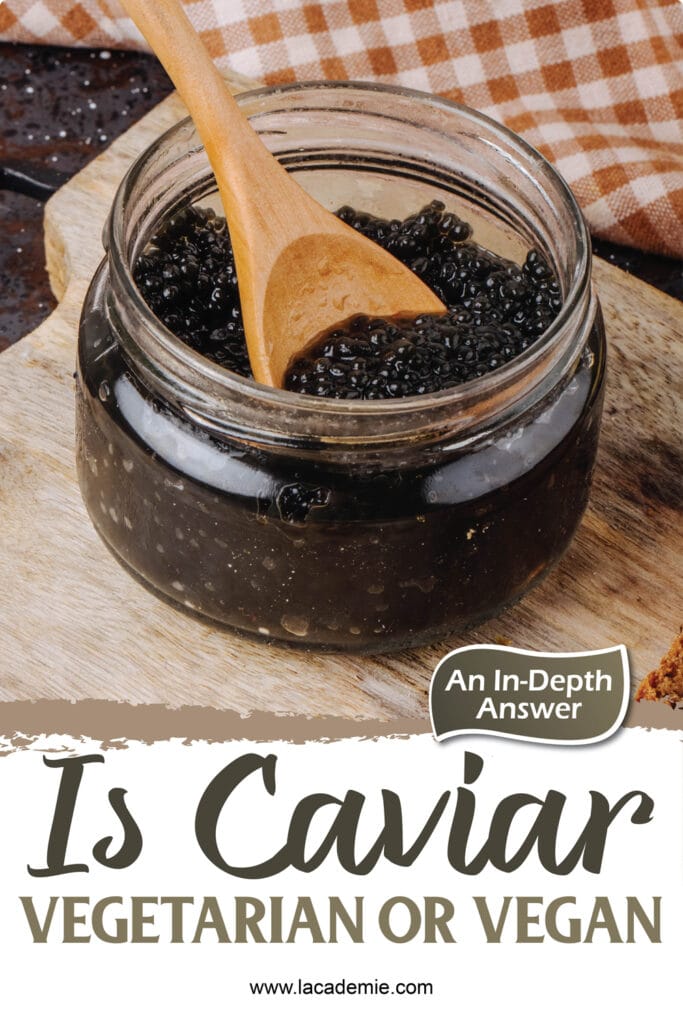
Reference
- Betterhealth.vic.gov.au. 2022. Vegetarian and vegan eating – Better Health Channel.
- hEn.wikipedia.org. 2022. Umami – Wikipedia.

